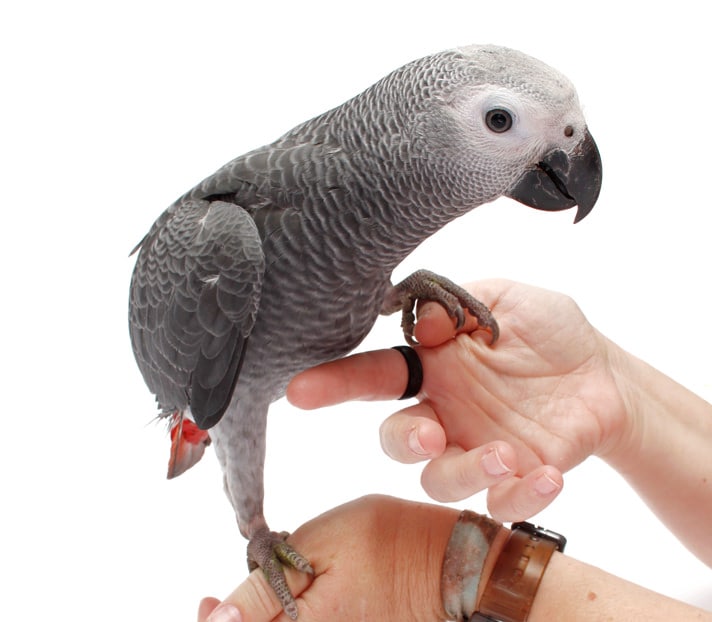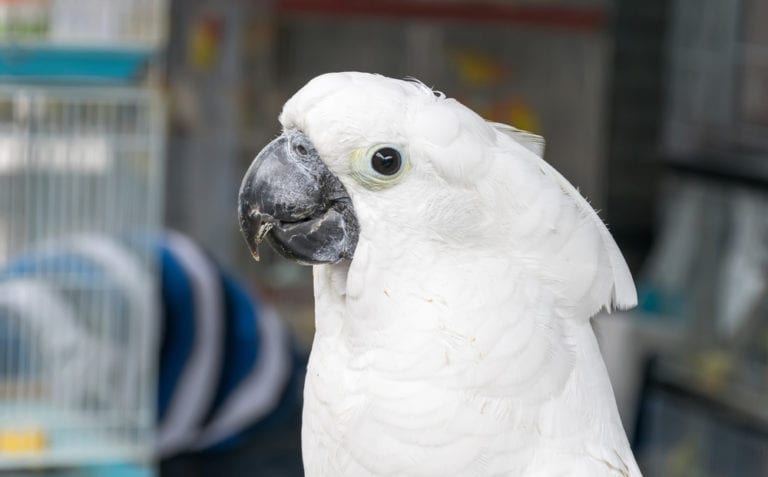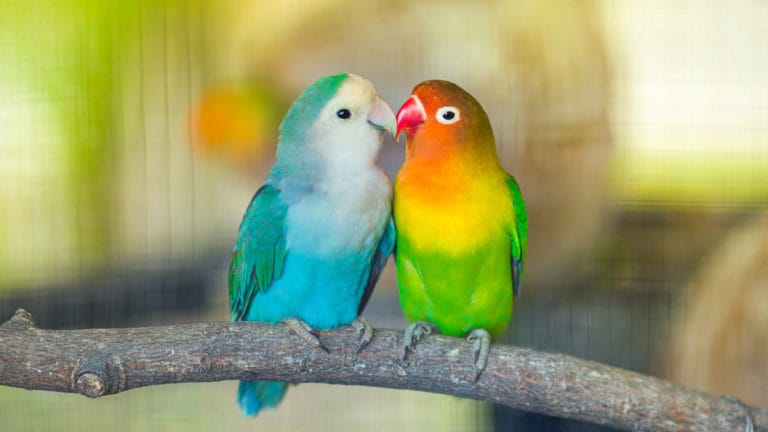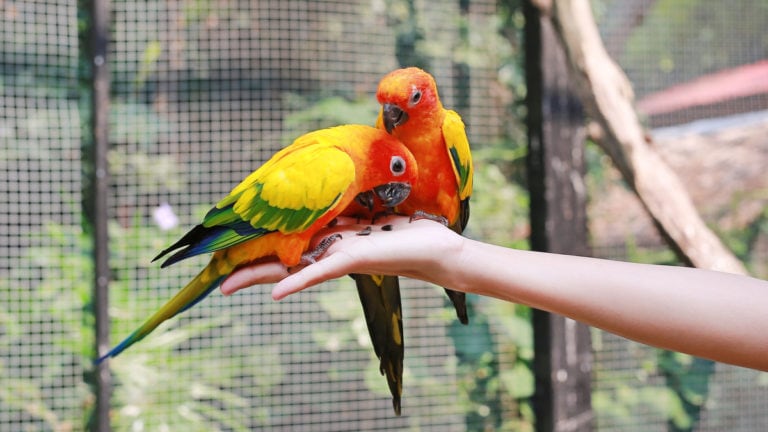Q.
I have an African grey that came from an abusive home. He allows me to kiss him goodbye when I leave for work, but if I try to bring my hands up to touch him in anyway, he reacts badly. He hides in the corner of his cage and nervously chews his toenails. I have a hard time servicing his bird cage. Is there a way to get him to feel comfortable with hands?
A.
First of all, thank you for giving this anxious little bird a chance. Working with parrots that have apparently been mishandled requires patience and compassion, but these pet birds can definitely be rehabilitated if allowed to move at their own speed. Incidentally, I have seen a number of parrots over the years that have learned to be afraid of hands, although they were never actually abused. Whatever the cause of fearful behaviors, the treatment is essentially the same.
Your Pet Bird’s Fear
First, assess the parameters of your African grey’s fear. Some parrots might be afraid of hands entering the pet bird cage but not of hands carrying luscious bird treats. At the other end of the spectrum is the pet bird that goes into frenzied terror at the mere sight of human hands—even from across the room.
Where on the spectrum does your pet bird fall? Is he worried about your hands if you scratch your nose while standing 4 feet away from his cage? If not, what about 3 feet away? When assessing this, stand or sit with your body turned slightly away from him; do not make direct eye contact.
Try this exercise wearing a sweatshirt with the sleeves pulled down over your hands; see how close you can get to him with his body language remaining relaxed (eyes interested, feathers soft).
Now that you have identified your bird’s comfort zone, stay outside of that magic circle as much as possible in the beginning of your training with him. Your objective is to get him to relax in your presence. As this happens, you can begin to inch closer as long as his body language remains relaxed.
Desensitize Your Pet Bird’s Fear
I have found the easiest way to get a parrot over a fear of hands is a process called desensitization. Using this approach, you will expose your bird to hands for very short periods during the day, pushing the envelope a tiny bit each time. This hopefully will teach your pet bird through incremental steps that hands do not pose a threat and that hands can provide stuff the bird values, things that he only gets when in proximity to these previously scary objects.
Animal trainers have long understood the benefits of desensitization training. To reduce a dog’s fear of thunderstorms, the trainer feeds the dog treats while it listens to a tape recording of thunder. This changes the animal’s perception of thunder from a negative to a positive. “Oh no, there’s that terrible noise that scares me” becomes, “Oh boy, there’s that noise that means I’m going to get bites of hot dog!” When the positive association overrides the negative, food rewards can be phased out.
Using this same negative to positive concept with your pet bird, your hands should only do positive things around your parrot. Whenever your hands appear, lovely food treats will also appear. Fascinating toys (if he likes toys) should materialize when your hands are nearby. For now, negative or threatening things like servicing the cage should only be done with hands safely tucked away in sleeves, out of sight.
Teach Step Up To Your Pet Bird
You can still teach a hand-wary bird to step up. Many parrots don’t mind palm down hands. Rest your palm-down hand on a flat surface and have your grey step onto the back edge of that hand. Hold a treat high over your hand to encourage him. Once the pet bird doesn’t hesitate to step onto the back of a hand, gradually turn the hand into a more normal position as the pet bird continues to use it to reach the reward it seeks. Spread over weeks—or months—this process always works if done with sufficient patience.
Incidentally, I have seen many African greys become wary of hands when people made incorrect assumptions about petting. Many African greys (as well as individuals in other psittacine species) do not care to be “petted,” and do not behave kindly toward the rude humans who force themselves on them. I knew one very gentle African grey that finally resorted to biting to get his well-meaning but oblivious owner to stop forcing herself on him.
Observe Your Pet Bird’s Body Language
You said, “If I try to bring my hands up to touch him in any way, he reacts badly.” This could simply be because he has learned that humans insist they have the right to fondle an animal whether it likes it or not. Parrots are not dogs with feathers. Like cats, they often have opinions about what humans can and cannot do to their bodies. Watch your bird’s body language carefully, and you might find that it is not your hands that are the problem but rather what your hands are trying to do.
Again, you’ll need unyielding patience when working with birds with fear issues. Trust is not easily earned with parrots whose experiences with humans have been less than ideal. Be patient and compassionate, and let him move at his own speed, lavishly rewarding him with enthusiastic praise for each tiny moment of bravery.
Watch him carefully, and you will find he will tell you what he wants from you. Respect his boundaries, and you will earn a lasting relationship with an incredible creature. There is no rush, after all. You have many years to enjoy each other if you take your time now.
Posted By: Chewy Editorial
Share:









